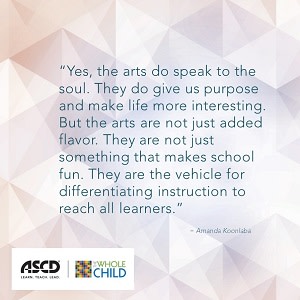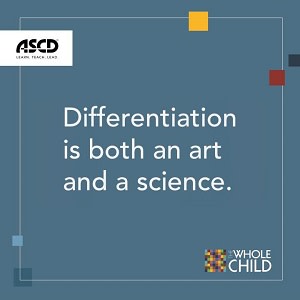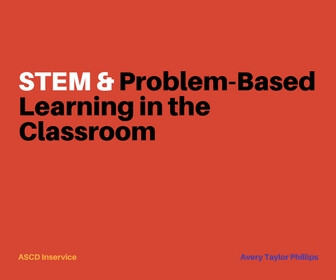Note: This post was inspired by A Leadership Manifesto: A Guide to Greatness by Lolly Daskal. It’s part two of an ongoing series on instructional leadership. Read part one here and part three here.
Every instructional leader needs a personal manifesto — something that lets others know their views, priorities, beliefs and intentions. When you create your manifesto, you create a sense of transparency and you will have an end in mind.
Here are the statements that define my Instructional Leadership Manifesto:
1. I will work with teachers and administrators to identify what every student should know and be able to do.
Curriculum design is the foundation of opportunity to learn and instructional leadership. Traditionally, the written curriculum has not matched the taught curriculum among teachers within a school. Jacobs (1997) wrote, “If there are gaps among teachers within buildings, there are virtual Grand Canyons among buildings in a district” (p. 3). “Choosing important knowledge, sequencing it well, and getting it behind every classroom door in every grade” is an important part of ensuring that all students receive a rigorous and relevant education” (Parker, 1991, p. 84).
2. I will multiply leaders and take others on the instructional leadership journey.
People matter. Maxwell (1995) wrote, “If you really want to be a successful leader, you must develop other leaders around you. You must establish a team” (p. 2). If instructional leadership becomes a matter of pleasing the person with the title, there will be little buy-in and that will have a negative impact on students. “A good leader has the ability to instill within his people confidence in himself. A great leader has the ability to instill within his people confidence in themselves” (Maxwell, 1995, p. 55). Who are you investing in this year? When you multiply leaders, you will have leaders in every building and across grade levels. Empowering others is one of the main roles of instructional leaders.
3. I will design a system that focuses on high-yield instructional strategies and provide professional development to ensure that teachers continue to develop tools in their instructional toolkit.
Instructional leaders provide a system that supports teaching and learning, including research-based instructional strategies. In the absence of a system, student understanding is left to the discretion of each classroom teacher. Instructional leaders must strive to identify the main focus for each grade level or course and then work collaboratively to ensure that each student is challenged and provided with scaffolding as needed. Hattie suggests that principals are engaged in instructional leadership when they “have their major focus on creating a learning climate free of disruption, a system of clear teaching objectives, and high teacher expectations for teachers and students” (2012, p. 83). When instructional leadership becomes the priority for teachers, administrators, coaches, directors, and other staff, then student understanding will grow. A school without clearly defined goals is like a ship without a rudder; it lacks direction and a slight wind could easily blow it off course (Wiles, 2009).
4. I will provide teachers with an environment where they can take risks, try new instructional strategies, and become innovative educators who support a new generation of learners.
Are you a risk taker? Obviously, there are few people in the world who wish to cross Niagara Falls on a tightrope. This type of risk taking can be described as “daredevil.” Instructional leaders need to support classrooms and lessons where teachers and students are free to take risks. When we take risks, we grow as learners. The traditional classroom was designed to sort and select students – to help students move toward college or toward a career. “College and career readiness is not something that suddenly ‘happens’ when a student graduates from high school but instead is the result of a process extending through all the years of a student’s education” (ACT, 2008, p. 3). What risks will you and your colleagues take in order to move students closer to the goal of College and Career Readiness?
5. I will support teachers in identifying the district’s Transfer Goals.
How often do we design teaching and learning for transfer? According to Grant Wiggins (2013), “Transfer is the bottom-line goal of all learning, not scripted behavior. Transfer means that a learner can draw upon and apply from all of what was learned, as the situation warrants, not just do one move at a time in response to a prompt.” It is critical to design for transfer. When educators focus on transfer they will design authentic tasks for students. When a district team identifies transfer goals, it will support teachers across schools. Teaching does not need to follow a script. When individual teachers design lessons and units, they can align their assignments to the district’s transfer goals. Instructional leaders facilitate conversations that lead to district transfer goals for each subject.
6. I will use data to determine next steps for program development, instructional strategies, curriculum alignment, and response to student needs.
Instructional leaders use data to determine if the written curriculum and instructional strategies are yielding the desired outcomes. Data-driven schools focus on key indicators that support teaching and learning. There are two types of schools: Schools where student growth is increasing and schools where student growth is declining. “Timely indicators are hugely important if institutional leaders are to know whether things are on track or off track – before it’s too late” (Offenstein, Moore, & Shulock, 2010, p. 1). Principals should monitor attendance, behavior, grades, formative assessment scores, summative assessment scores, and other indicators that are available. Data-driven schools are focused on continuous improvement. “The ultimate validation of a curriculum lies in its results; that is, did it help students achieve the desired outcomes?” (Wiggins & McTighe, 2007, p. 159).
Five Reasons Schools Need Instructional Leaders:
1. Instructional Leadership provides clarity. What should every student know and be able to do?
2. Instructional leadership provides opportunities to develop and empower future leaders. Instructional leadership is not a solo act. How is the leader developing teacher leaders, future principals, and providing each aspiring leader with a leadership opportunity?
3. Instructional leadership provides the opportunity for continuous improvement. Schools should be learning organizations.
4. Instructional leadership provides the opportunity to establish goals. Goals provide teachers and students with something to aim for.
5. Instructional leadership provides the opportunity for improved alignment. Glatthorn (1987) wrote, “One of the tasks of curriculum leadership is to use the right methods to bring the written, the taught, the supported, and the tested curriculums into closer alignment, so that the learned curriculum is maximized” (p. 4).
Write Your Own Instructional Leadership Manifesto:
What is an instructional leader? A second grade teacher can serve as an instructional leader. Principals and assistant principals should also be viewed as instructional leaders. A central office staff member may have the title of Chief Academic Officer or Curriculum Director, but can also be a leader within the school district. Instructional leadership is important to the success of a school district. By writing an Instructional Leadership Manifesto, you will reflect on your goals and you will have the opportunity to determine your priorities as a leader. What are your next steps? How can you improve as an instructional leader?







